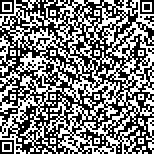孙琪,石露,蒋红,胡兴越.神经电生理技术在糖尿病周围神经病诊断中的联合应用[J].中华物理医学与康复杂志,2015,37(11):867-870
扫码阅读全文

|
| 神经电生理技术在糖尿病周围神经病诊断中的联合应用 |
|
| |
| DOI: |
| 中文关键词: 糖尿病周围神经病变 定量温度觉阈值 交感皮肤反应 神经传导速度 |
| 英文关键词: Diabetic peripheral neuropathy Quantitative temperature threshold Sympathetic skin response Nerve conduction velocity |
| 基金项目:浙江省自然科学基金项目(LY16H090002),浙江省教育厅2014年科研项目(N20140187) |
|
| 摘要点击次数: 2072 |
| 全文下载次数: 3032 |
| 中文摘要: |
| 目的探讨联合神经电生理技术在糖尿病周围神经病(DPN)中诊断的应用价值。 方法对85例确诊糖尿病患者分别进行定量温度觉阈值(QTT)、交感皮肤反应(SSR)及神经传导速度(NCV)检测,其中QTT检测指标包括冷觉阈值(CST)、热觉阈值(WST)、冷痛觉阈值(CPT)和热痛觉阈值(HPT)。待各项神经电生理检查结束后,对其结果进行统计学分析。 结果入选糖尿病患者QTT、SSR及NCV异常率分别为84.71%、56.47%和31.76%,经统计学比较,发现入选患者QTT异常率显著高于SSR及NCV异常率(均P<0.05)。无DPN症状组和有DPN症状组其QTT异常率(分别为78.85%和93.94%)组间差异无统计学意义(P>0.05),SSR异常率(分别为48.08%和69.70%)、NCV异常率(分别为19.23%和51.52%)组间差异均具有统计学意义(P<0.05)。短病程组和长病程组QTT异常率(分别为77.77%和89.80%)组间差异无统计学意义(P>0.05),SSR异常率(分别为44.44%和65.31%)、NCV异常率(分别为19.44%和40.82%)组间差异均具有统计学意义(P<0.05)。 结论与SSR及NCV检测比较,QTT检测糖尿病患者的异常率最高,其异常率结果与患者临床症状及病程无明显相关性,SSR及NCV异常率与临床症状、病程均具有相关性;联合采用QTT、SSR及NCV检测DPN具有更高的敏感性。 |
| 英文摘要: |
| Objective To evaluate the value of united nerve electrophysiological tests in the diagnosis of diabetic peripheral neuropathy (DNP). MethodsThe quantitative temperature threshold (QTT), including the cold sensation threshold (CST), thermal sensation threshold (WST), cold pain threshold (CPT) and thermal pain threshold (HPT), sympathetic skin response (SSR) and nerve conduction velocity (NCV) were measured for 85 diabetic patients. ResultsThe abnormal rate of QTT was 84.71%, significantly higher than that of SSR and NCV (56.47% and 31.76% respectively). However, no significant difference was found in the abnormal rate of QTT between the DPN asymptomatic group and DPN symptomatic group (78.85% and 93.94% respectively). There was significant difference in the abnormal rate of SSR (48.08% and 69.70% respectively) and the abnormal rate of NCV (19.23% and 51.52% respectively) between the above two groups(P<0.05).There was no difference in the abnormal rate of QTT for patients with short or long course of disease (77.77% and 89.80% respectively), but significant difference in the abnormal rate of SSR (44.44% and 65.31% respectively) and the abnormal rate of NCV (19.44% and 40.82% respectively) ConclusionThe abnormal rate of QTT was highest in detecting the diabetic patients, and it is not related to clinical symptoms or disease course. However, the abnormal rates of SSR and NCV were related to clinical symptoms and course. It is more sensitive to diagnose DPN using united electrophysiological tests of QTT, SSR and NCV. |
|
查看全文
查看/发表评论 下载PDF阅读器 |
| 关闭 |